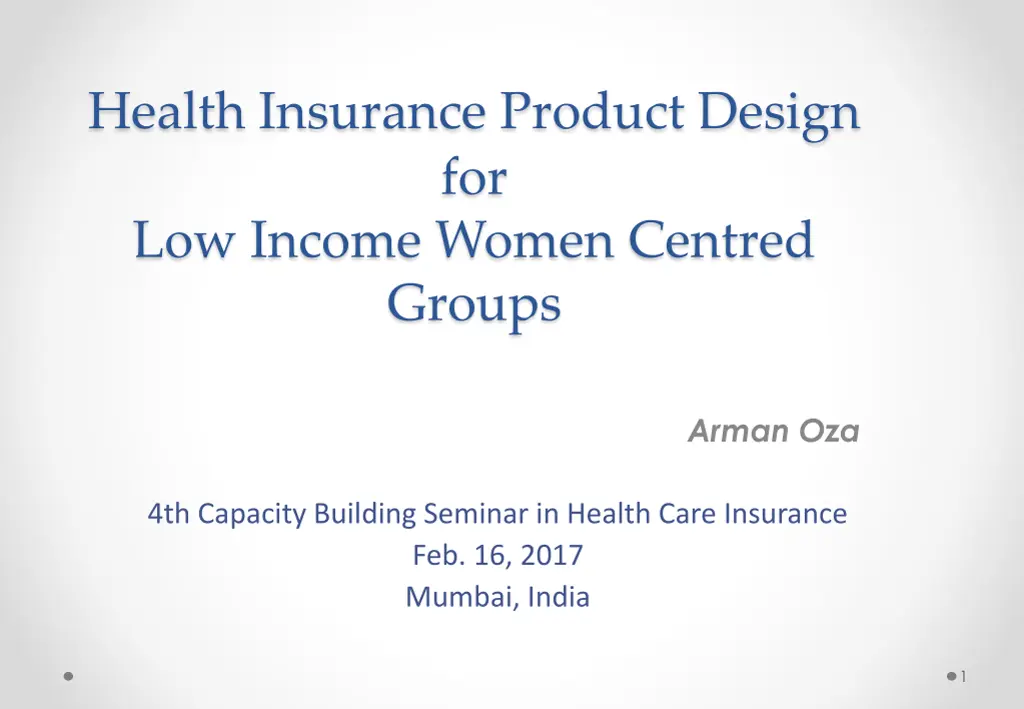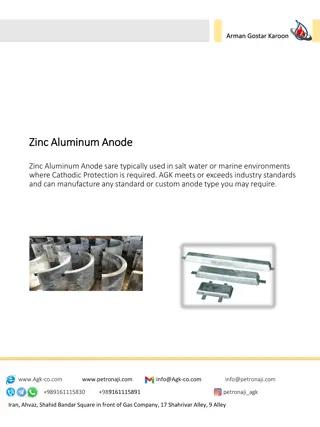
Health Insurance Product Design for Low Income Women
Explore the innovative approach to health insurance product design tailored for low-income women, discussing client value, utilizing scale and sustainability, intrinsic and perceived value, reasons why people don't buy insurance, characteristics of low-income consumers, salability factors, and the PACE framework for microinsurance innovation.
Uploaded on | 0 Views
Download Presentation

Please find below an Image/Link to download the presentation.
The content on the website is provided AS IS for your information and personal use only. It may not be sold, licensed, or shared on other websites without obtaining consent from the author. If you encounter any issues during the download, it is possible that the publisher has removed the file from their server.
You are allowed to download the files provided on this website for personal or commercial use, subject to the condition that they are used lawfully. All files are the property of their respective owners.
The content on the website is provided AS IS for your information and personal use only. It may not be sold, licensed, or shared on other websites without obtaining consent from the author.
E N D
Presentation Transcript
Health Insurance Product Design for Low Income Women Centred Groups Arman Oza 4th Capacity Building Seminar in Health Care Insurance Feb. 16, 2017 Mumbai, India 1
Objectives of Product Development Client Value & Utilization Scale and Sustainability 2
What Is Client Value? Client Value in Microinsurance Customers don t buy products they buy solutions Reduced Vulnerability Welfare 3
Intrinsic Value Perceived Value Will he pay my claim? Benefits Features Cost Flexible Communication -Marketing -Education 4
Why People Dont Buy Insurance? Pain of losing is twice the pleasure of gaining. Risk averse on gains and risk takers on losses Loss Aversion When in doubt, stay where you are. Wandering around the reference point. Status Quo Bias Ignorance of low probabilities Visualization of loss-producing events. Availability Bias Absence of a futuristic outlook. Avoiding the big picture Narrow Framing Buyer s remorse Costlier the product, higher is the remorse. Cognitive Dissonance 5
Who is a Low Income Consumer Modest Earnings Adverse health behaviour No Savings Short term Outlook Financially Excluded Fatalist Thinking 6
Salability Frequent enough to be credible High enough to be threatening Frequency RISK Severity Rare enough to keep loadings within limits Low enough to be absorbed by small contributions by many Insurability
The PACE Framework Coverage Flexibility Simplicity Value Added Services Choice Information Proximity Product Access Cost Experience Affordable Structure Benefit Quality Processes Facilitation Courtesy: PACE Framework, Microinsurance Innovation Facility 8
Profiling Health Risks Health Risks Frequency Severity Financial Impact Low / Medium Primary Healthcare (Visits to Family Physician for common ailments like cough, cold, fever, etc. Secondary Healthcare Hospitalisation for typhoid, dehydration, etc. Tertiary Healthcare Major ailments and surgeries like cancer, heart attacks, kidney transplant, etc. Medium / High Low Low Medium to High High Low High High 9
Why Women Centric? Research has proved that o Women are more sensitive to the well-being of the family o They have a better futuristic vision o More open to new ideas o More likely to adopt financial planning o Can take the entire family long. 10
Health Insurance Product Design for Low Income Segment Features Cover frequent risks Simple wordings Minimum exclusions Pricing Uniform Pricing Flexible premium payment Incentives for preventive health actions Value Added Services Discounted services Preventive health interventions
THANKS 12



